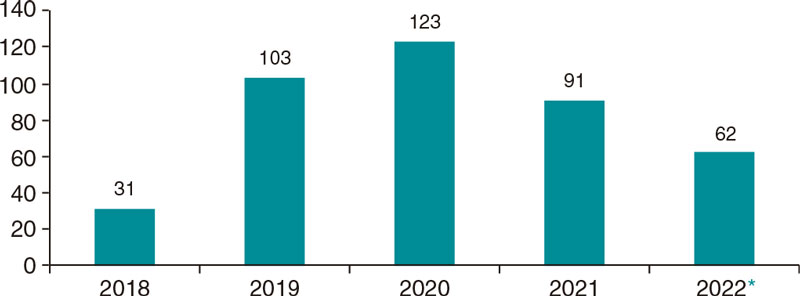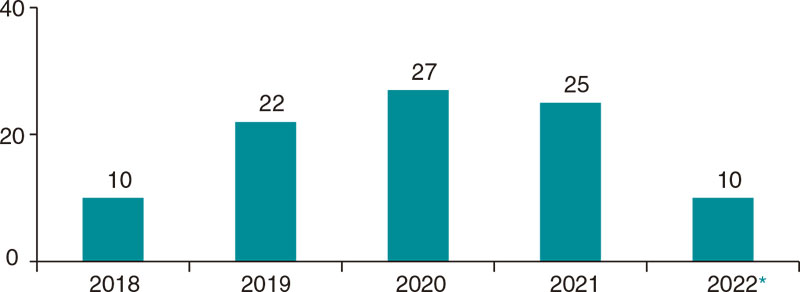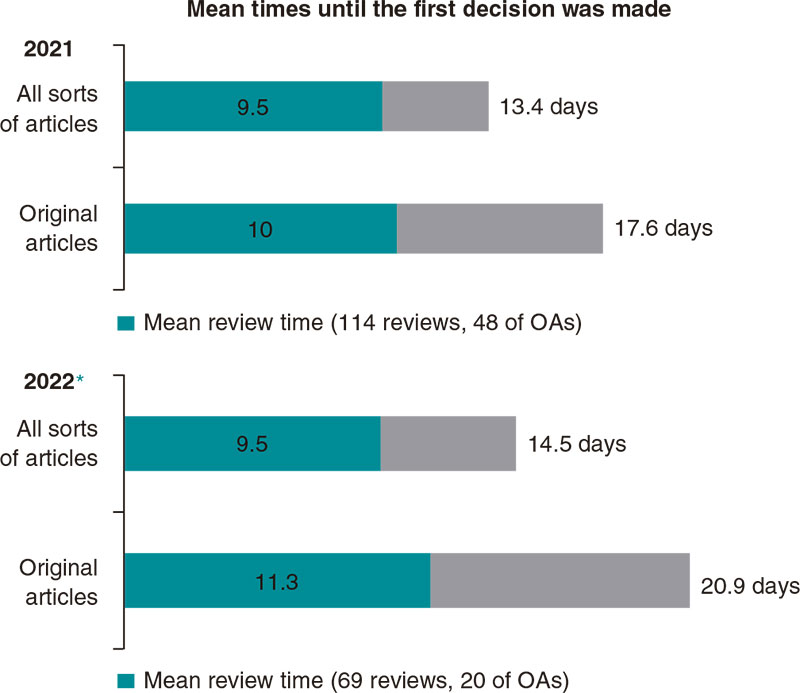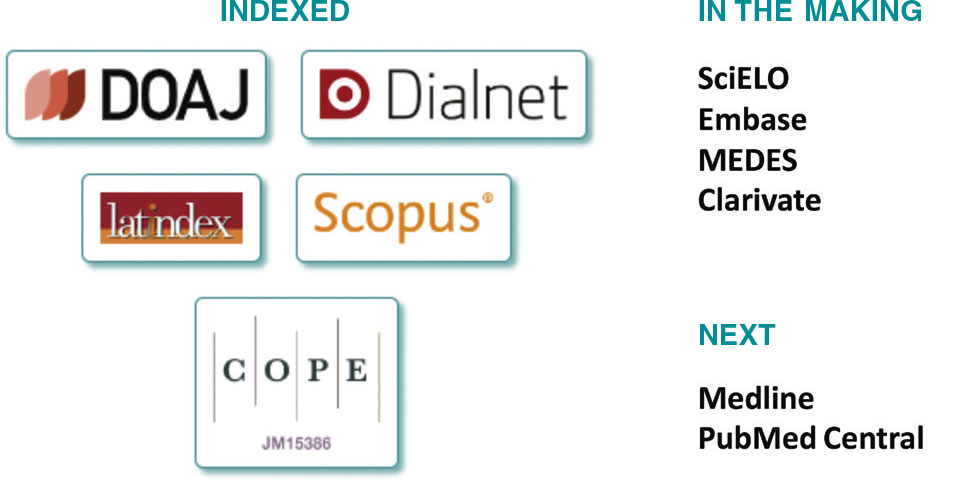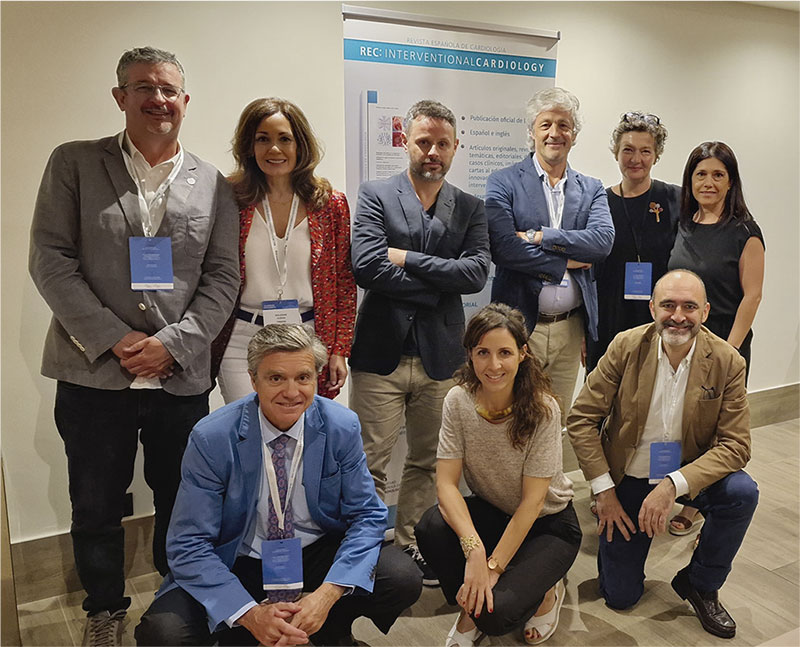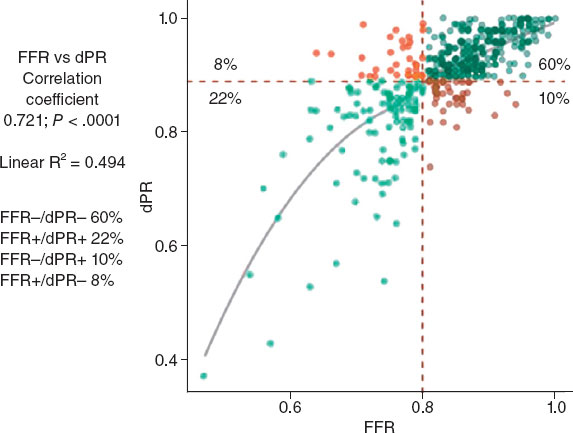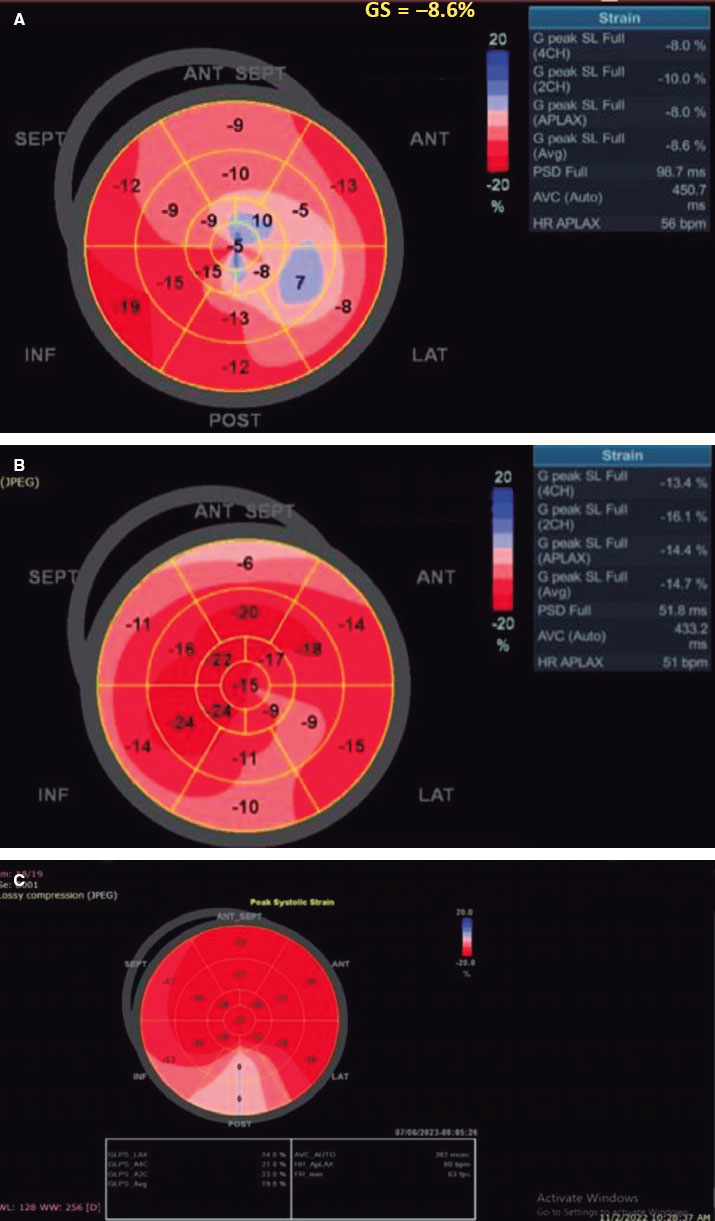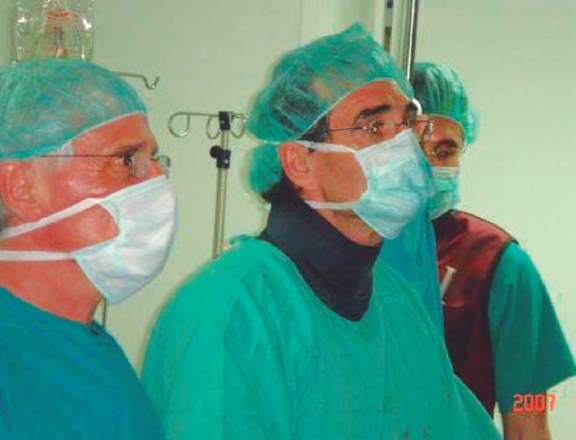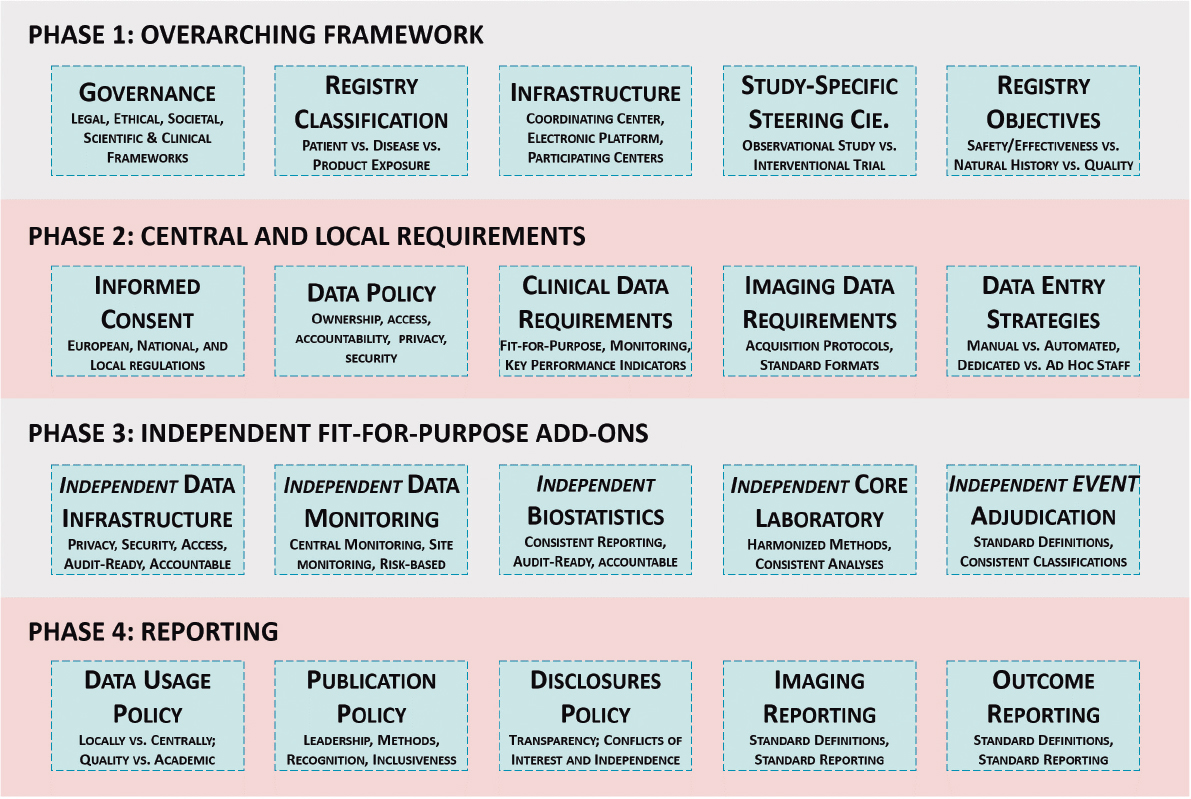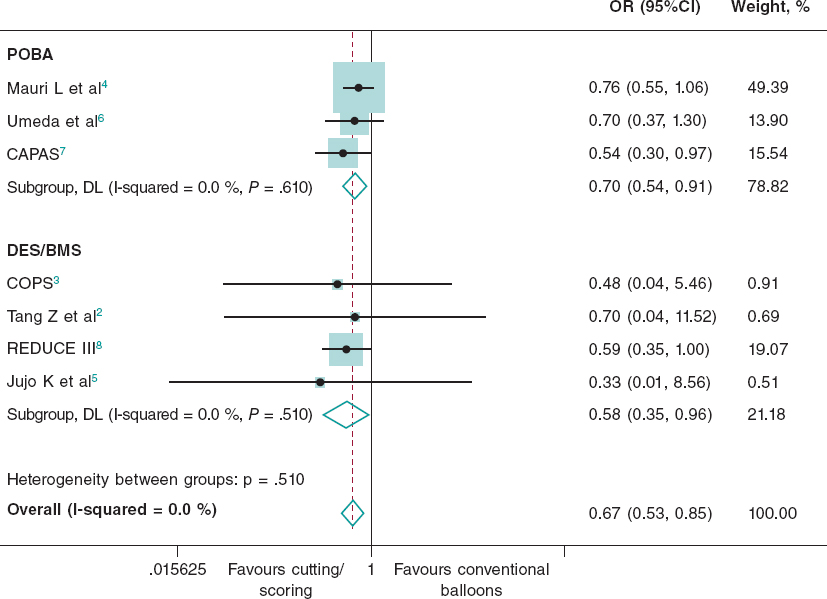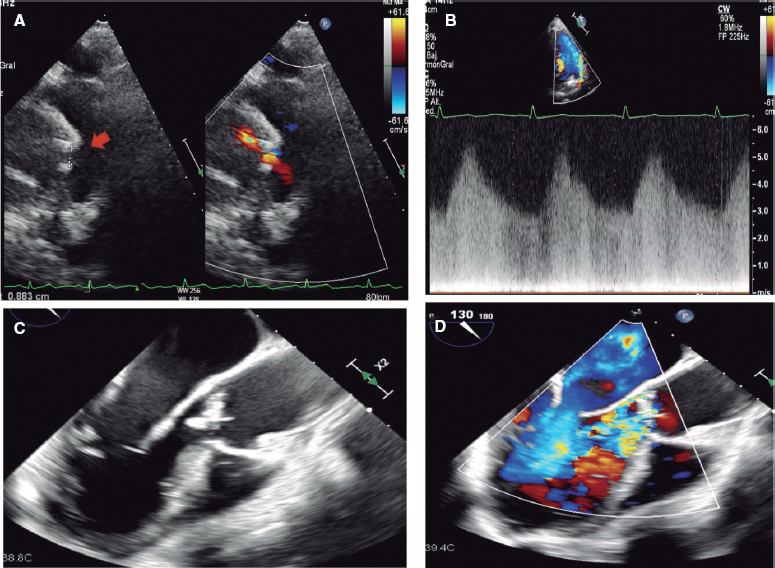At the time of writing, 4 years have gone by since REC: Interventional Cardiology made its publishing appearance for the first time. Overall, these have been very intense years due to the COVID-19 pandemic. In particular due to the uncertainty surrounding the birth of a new medical journal in today’s competitive setting.
Still, we strongly believe that these 4 years have been more profitable for our young journal than we could have ever anticipated. Although we still are in the process of being included in certain citation indices, which will give us the impact metrics so attractive to authors, our journal has become established and publishes quality content on a regular basis. In this sense, and as we will be seeing next, REC: Interventional Cardiology has already been included in some citation indices and we are very close to being accepted in the most relevant ones.
REC: Interventional Cardiology is the official journal of the Interventional Cardiology Association of the Spanish Society of Cardiology (ACI-SEC) and stands tall as its official true means of expression. We can see that the decision to publish several consensus documents was correct as the thousands of visits received demonstrate.1,2 A couple more documents are in the pipeline and many more will follow in the future.
Our editorials have been signed by top national and international authors, our review articles are recognized for their quality and rigor, and debates show in a clear concise way the opinions of subject matter experts on hot topics.
Original articles, scientific letters, clinical cases, and images fill up the pages of our journal with interesting content. These manuscripts are meticulously reviewed and have an attractive presentation. Finally, news pieces on innovation have introduced to us the latest technical breakthroughs in the field of interventional cardiology.3
But none of this would be possible without our reviewers. As we have already done in the past, we wish to thank them for the invaluable, unselfish, and quality work they do. Thank you all for your cooperation. We are aware of the obligations you all have, and that is why we value your contribution to our journal so much.
EDITORIAL ACTIVITY
The first aspect we wish to discuss is very well illustrated on figure 1, that is, the increasingly growing number of contents published over the first few years of activity in both number and variety. In this sense, it has been very satisfactory to include abstracts on communications presented at ACI-SEC congresses.5
Figure 1. Total content published in 2019, 2020, and 2021. Congress abstracts are counted as a single unit. Each clinical case is counted as 3 units as it is organized into 3 independent articles: Case, How would I approach it?, and Resolution.
Over the last few years of activity, we have seen a peak in the volume of manuscripts submitted in 2020 (figure 2). This phenomenon has been seen in all medical journals. There are two reasons for this. One is that cardiologists had more spare time to write during lockdown, the other one is the proliferation of manuscripts on COVID-19.
Figure 2. Overall number of manuscripts received per year. *Data until June 30, 2022.
Although all the manuscripts submitted had a variable degree of interest, our journal is no different to other medical journals and the limited space for publication makes us select those considered more valuable and relevant. Nonetheless, the gradual increase of space for original papers, scientific letters, and images in each issue has opened the door to many of these contents.
Of all the manuscripts received in 2021 and within the first semester of 2022 from countries other than ours, we should mention those submitted from Latin America and Europe.
Original articles
After the peak of papers received back in 2020, there has been a certain drop in the demand for publication in all sorts of articles (figure 2). In the case of original articles, in 2021 the number of manuscripts submitted slightly dropped (figure 3) though numbers were higher compared to 2019. We believe 2022 is going to end with a similar volume of original articles submitted compared to the previous year. The rate of acceptance of this type of papers in 2021 and within the first semester of 2022 is well above 80% (figure 4).
Figure 3. Number of original articles received per year. *Data until June 30, 2022.
Figure 4. Editorial decisions made on original articles. *Decisions made until June 30, 2022.
At this point, our main goal is to increase the number of original articles, which is why we want to ask the interventional cardiologist community to submit research papers. To guarantee that future issues are fully covered it is essential to have enough high-quality originals.
REC: Interventional Cardiology offers a fast, quality review process, and provides top coverage and circulation of the studies being published.
Scientific letters
Regarding scientific letters, the already discussed phenomenon of a peak in 2020 was much more pronounced compared to original articles (figure 5). The scientific letters rate of acceptance during 2021 and the first semester of 2022 was also high due to the high interest aroused (figure 6).
Figure 5. Number of scientific letters received per year. *Data until June 30, 2022.
Figure 6. Editorial decisions made on scientific letters. *Decisions made until June 30, 2022.
Due to the volume of letters received since the publication of the last issue in 2020 the space available for this type of manuscripts grew to a maximum of 4 per issue. It is important to find balance and guarantee a constant demand for publication without generating a stock that can be too large.
Clinical cases
Something similar has happened with clinical cases and scientific letters. The higher number of articles submitted under this format during 2020 was followed by a slight decrease in 2021 (figure 7). The lower rate of acceptance from 2021 is striking (figure 8). The reason for this higher rate of rejection is the inbalance between the number of cases received (as this is a very popular format among interventional cardiologists) and the number of cases for publication (4 throughout the year). The accumulation of cases in the publication roster makes us be highly restrictive. However, within the first semester of 2022 the rate acceptance started to go up (figure 8).
Figure 7. Number of clinical cases received per year. *Data until June 30, 2022.
Figure 8. Editorial decisions on clinical cases. *Decisions made until June 30, 2022.
Images in cardiology
Regarding the images, as with the rest of contents, we see a peak in 2020, and in 2021 a drop to numbers from 2019. However, the tendency within the first semester of 2022 is to exceed by far the images in cardiology submitted as compared to previous years (figure 9). The rate of acceptance in 2021 was somehow higher compared to clinical cases since, despite being a very popular typology too, up to 3 images per issue are being published (figure 10).
Figure 9. Number of images in cardiology received per year. *Data until June 30, 2022.
Figure 10. Editorial decisions on images in cardiology. *Decisions made until June 30, 2022.
As with clinical cases, the accumulation of images pending publication, limits the possibility of acceptance.
Contents transferred from Revista Española de Cardiología
With its high impact factor, Revista Española de Cardiología draws a large number of manuscripts, much more than can be accepted, which leads to a high rate of article rejection despite their undoubted interest. Revista Española de Cardiología’s editorial team gives us the possibility to review rejected manuscripts and offer authors the possibility to transfer their submissions to our journal.
Although the number of transferred manuscripts is still limited, we have the conviction that, little by little, this alternative will become more attractive and accepted as our journal keeps gaining traction in the most relevant citation indices.
LATEST EDITORIAL CHANGES IMPLEMENTED
As our journal continues to grow, we have been trying to include new improvements and functionalities we believe are useful to both authors and readers. Next, some of the improvements we implemented last year:
- – Including the authors’ Twitter profiles to help article dissemination in social media.
- – Optional graphical abstract (central illustration) in original and special articles.
- – All authors meeting the International Committee of Medical Journal Editors’ authorship criteria can be included in the authorship byline.
- – At the submission stage, authors must identify the specific part of the article stating that appropriate consents and ethical committee approval were obtained.
REVIEWERS
Table 1 shows the list of reviewers who have actively reviewed manuscripts for REC: Interventional Cardiology from July 1, 2021 through June 30, 2022. Table 2 lists 2021 elite reviewers.
Table 1. REC: Interventional Cardiology reviewers who conducted their reviews from July 1, 2021 through June 30, 2022
table 2
| César Abelleira | Antonio E. Gómez-Menchero |
| Juan H. Alonso-Briales | Nieves Gonzalo |
| Ignacio Amat | Enrique Gutiérrez-Ibañes |
| Eduardo Arroyo | Federico Gutiérrez-Larraya |
| Dabit Arzamendi | Felipe Hernández |
| Pablo Avanzas | Santiago Jiménez-Valero |
| Fernando Ballesteros | Alfonso Jurado |
| José A. Barrabés | María López-Benito |
| Teresa Bastante | José R. López-Mínguez |
| Salvatore Brugaletta | Diego López-Otero |
| Ramón Calviño | Ramón López-Palop |
| Xavier Carrillo | Íñigo Lozano |
| Mario Castaño | Gerard Martí |
| Alberto Cecconi | Javier Martín-Moreiras |
| Ángel Cequier | Luis Nombela |
| Belén Cid | Soledad Ojeda |
| Juan G. Córdoba | José M. Oliver† |
| Bernardo Cortese | Imanol Otaegui |
| Félix Coserría | Manuel Pan |
| José F. Díaz | Isaac Pascual |
| Alejandro Diego-Nieto | Armando Pérez de Prado |
| Jaime Elízaga | Eduardo Pinar |
| Rodrigo Estévez-Loureiro | Fernando Rivero |
| José A. Fernández-Díaz | Oriol Rodríguez |
| Cristina Fernández-Pérez | Gerard Roura |
| Ignacio Ferreira | Juan M. Ruiz-Nodar |
| José L. Ferreiro | José R. Rumoroso |
| Xavier Freixa | Pablo Salinas |
| Guillermo Galeote | Marcelo San Martín |
| Sergio García-Blas | Ángel Sánchez-Recalde |
| Tamara García-Camarero | Ana Serrador |
| Bruno García del Blanco | Javier Suárez de Lezo |
| Marcos García-Guimaraes | Ramiro Trillo |
| Arturo García-Touchard | Leire Unzué |
| Joan A. Gómez-Hospital | Beatriz Vaquerizo |
| Josep Gómez-Lara | José L. Zunzunegui |
Table 2. Elite reviewers 2021*
| Salvatore Brugaletta |
| Santiago Jiménez Valero |
| Alfonso Jurado-Román |
| Ángel Sánchez-Recalde |
|
* Reviews conducted from September 1, 2020 through August 31, 2021. |
We can never thank enough for your agile, rigurous, and unselfish work. Reviewers are essential in the process of selecting the journal contents and safeguarding the scientific quality of our manuscripts.
Figure 11 shows the very satisfactory mean editorial times, closely related to the excellent job done by reviewers.
Figure 11. Mean editorial times from reception until the first editorial decision was made. OA, original articles. *Data until June 30, 2022.
INDEXATION
To the indexation of REC: Interventional Cardiology in the Directory of Open Access Journals (DOAJ), Latindex and Dialnet, we must add Scopus, in whose search engine appears since December 2021. In the same month, the journal was accepted for inclusion in the Committee on Publication Ethics (COPE) (figure 12).
Figure 12. State of REC: Interventional Cardiology in citation indices.
Currently, REC: Interventional Cardiology is under evaluation in SciELO, Embase, MEDES, and Clarivate. The applications to Medline and PubMed Central will follow soon.
DISSEMINATION
The year 2021 marked the comeback of on-site meetings and the 32nd ACI-SEC Congress was held in Malaga, Spain from September 22 to September 24. As it has been the case since the beginning, the abstracts from the congress were published in REC: Interventional Cardiology,4 and a huge effort was made so everything was readily available before the congress. In 2022 we have set ourselves the same goal, and the abstracts presented at the 33rd Interventional Cardiology Association of the Spanish Society of Cardiology Congress held in June in Alicante, Spain had already been published on our website by the end of May.5
Regarding the most widely read articles, some special papers gained great visibility. This was the case of the ACI-SEC technical document on the assessment of the endothelial function and spasm provocation test performed by intracoronary infusion of acetylcholine1, with nearly 6000 visits. The position statement between the Spanish Society of Hypertension-Spanish League Against Arterial Hypertension (SEH-LELHA) and the ACI-SEC on renal denervation to treat arterial hypertension2 also generated over 3000 visits. Both articles were commented with their authors in our Editor’s pick videos6, embedded in the articles.
The section «Debate» in our website has been redesigned to offer a more attractive and intuitive picture for the readers.7
The different sources of traffic towards the website8 maintain the same tendency: the main one being organic traffic (searches for keywords in browsers) followed by direct traffic and hyperlinks from different websites. In this sense, the official sites of the SEC9 and the ACI-SEC10 keep drawing the highest number of readers. We should mention the growing number of visits coming from repositories where the journal is indexed like DOAJ,11 and Dialnet.12
Also, the active involvement from interventional cardiologists on Twitter makes this social network our main source of visits (74.41%), followed by Facebook (18.28%), and LinkedIn (3.66%).
Our subscribers receive a newsletter with the table of contents for each issue, and all the articles published in REC: Interventional Cardiology can be accessed from the spaces designed for such purpose in Revista Española de Cardiología’s and the SEC’s websites. Our contents are also spread through SEC Sunday newsletters and SEC News.
At the same time, we keep promoting REC: Interventional Cardiology in international congresses—some held in Latin America—and scientific meetings. In our country, the journal was present at the 10th course on prevention and treatment of complications in percutaneous interventional cardiology organized by Hospital de Bellvitge, Catalonia, Spain and the Online course on complications in hemodynamics organized by the Spanish Society of Pediatric Cardiology and Congenital Heart Disease.
AWARDS
At REC: Interventional Cardiology we gratefully recognise all the contributions made by the authors. Proof of this is the number of prizes awarded to the best original articles every year at the ACI-SEC congress.13 Prize was €2500 total (€1500 for 1st prize, and €1000 for 2nd prize). Rules and regulations of these awards can be consulted on the journal website.14 In the 32nd ACI-SEC Congress held in September 2021, the 1st prize was awared to the manuscript entitled «Impact of the COVID-19 pandemic on interventional cardiology activity in Spain».15 This paper had wide impact, with more than 300 citations, many of them in the most prestigious cardiology medical journals. The 2nd prize was given to «Time trend in transcatheter aortic valve implantation: an analysis of the Spanish TAVI registry»16 with a notable citation rate.
At the 33rd ACI-SEC Congress held in June 2022, the 1st prize was awarded to an article entitled «Predictors of postprocedural fractional flow reserve: insights from the FFR-SEARCH study»17 from the renown Erasmus Medical Center, Rotterdam, The Netherlands. The 2nd prize was awarded to «Outcomes of nonagenarians after transcatheter aortic valve implantation»18 (a substudy of the Spanish TAVI registry).
ACKNOWLEDGMENTS
As the editor-in-chief I wish to thank my associate editors Fernando Alfonso, Raúl Moreno, and the latest to join, Soledad Ojeda, Armando Pérez de Prado, and Rafael Romaguera. All of them make up the team I have the privilege to work with (figure 13).
Figure 13. REC: Interventional Cardiology editorial team.
We are fully aware that the ACI-SEC carries the journal financial burden and makes it feasible. Regarding funding, it is truly nice to see the support from all the companies in the interventional cardiology field that make our journal possible thanks to their contribution.
Also, I wish to thank the excellent job and effort put into every detail by the REC Publications editorial office staff: Iria del Río, Eva M. Cardenal, Belén Juan, María González Nogal, and Helena Gómez Lobo, our former TIC consultant Pablo Avanzas, the current TIC consultant Juan Quiles, the SEC’s IT department, and the entire team at Permanyer Publications.
“When spider webs unite, they can tie up a lion”
Ethiopian proverb.
FUNDING
None reported.
CONFLICTS OF INTEREST
None whatsoever.
REFERENCES
1. Gutiérrez E, Gómez-Lara J, Javier Escaned J, et al. Assessment of the endothelial function and spasm provocation test performed by intracoronary infusion of acetylcholine. Technical report from the ACI-SEC. REC Interv Cardiol. 2021;3:286-296.
2. Rodríguez-Leor O, Jaén Aguila F, Segura de la Morena J, et al. Renal denervation for the management of hypertension. Joint position statement from the SEH-LELHA and the ACI-SEC. REC Interv Cardiol. 2022;4:39-46.
3. REC: Interventional Cardiology. Innovación en Cardiología Intervencionista. Available online: https://recintervcardiol.org/es/innovacion-en-cardiologia-intervencionista/. Accessed 1 Jul 2022.
4. Resúmenes presentados al 32 Congreso de la Asociación de Cardiología Intervencionista de la Sociedad Española de Cardiología. REC Interv Cardiol. 2021;3:C6-C25.
5. Resúmenes presentados al 33 Congreso de la Asociación de Cardiología Intervencionista de la Sociedad Española de Cardiología. REC Interv Cardiol. 2022;4:C26-C33.
6. REC: Interventional Cardiology. Editors’ pick. Available online: https://www.recintervcardiol.org/es/videos-del-editor. Accessed 1 Jul 2022.
7. REC: Interventional Cardiology. Debates. Available online: https://recintervcardiol.org/en/archive/section-index/debates. Accessed 1 Jul 2022.
8. REC: Interventional Cardiology. Available online: https://www.recintervcardiol.org/en. Accessed 1 Jul 2022.
9. Sociedad Española de Cardiología. Available online: https://www.secardiologia.es. Accessed 1 Jul 2022.
10. Asociación de Cardiología Intervencionista de la Sociedad Española de Cardiología (ACI-SEC). Available online: https://www.hemodinamica.com. Accessed 1 Jul 2022.
11. DOAJ. 2022. Available online: https://doaj.org/. Accessed 1 Jul 2022.
12. Dialnet. REC: Interventional Cardiology. 2022. Available online: https://dialnet.unirioja.es/servlet/revista?codigo=27004. Accessed 1 Jun 2022.
13. Sociedad Española de Cardiología. Premios a los mejores artículos publicados en REC: Interventional Cardiology en 2021. Available online: https://secardiologia.es/blog/rec-interventional-cardiology/13617-premios-a-los-mejores-articulos-publicados-en-rec-interventional-cardiology-en-2022. Accessed 6 Jul 2022.
14. REC: Interventional Cardiology. Premios de la asociación de cardiología intervencionista a los mejores artículos originales publicados en REC: Interventional Cardiology. Available online: https://recintervcardiol.org/es/premio/premio-de-la-asociacion-de-cardiologia-intervencionista-al-mejor-articulo-original-publicado-en-rec-2022. Accessed 6 Jul 2022.
15. Rodríguez-Leor O, Cid-Álvarez B, Ojeda S, et al. Impact of the COVID-19 pandemic on interventional cardiology activity in Spain. REC Interv Cardiol. 2020;2:82-89.
16. Jiménez-Quevedo P, Muñoz-García A, Trillo-Nouche R, et al. Time trend in transcatheter aortic valve implantation: an analysis of the Spanish TAVI registry. REC Interv Cardiol. 2020;2:96-105.
17. Van Zandvoort LJC, Masdjedi K, Neleman T, et al. Predictors of postprocedural fractional flow reserve: insights from the FFR-SEARCH study. REC Interv Cardiol. 2021;3:91-97.
18. Cepas-Guillén PL, Regueiro A, Sanmiguel Cervera D, et al. Outcomes of nonagenarians after transcatheter aortic valve implantation. REC Interv Cardiol. 2021;3:250-257.



